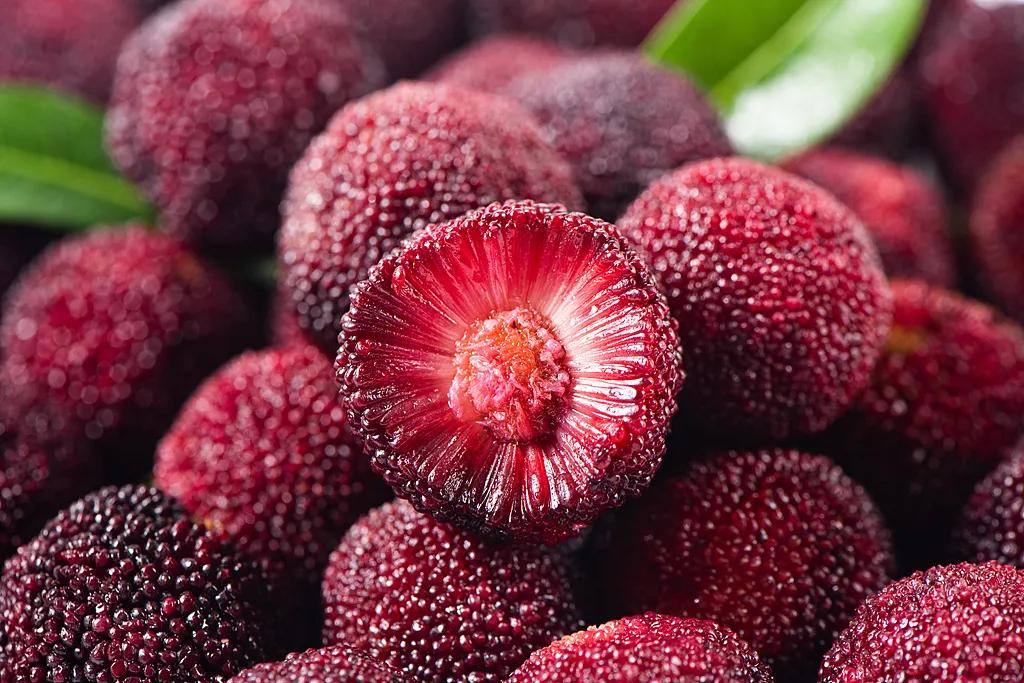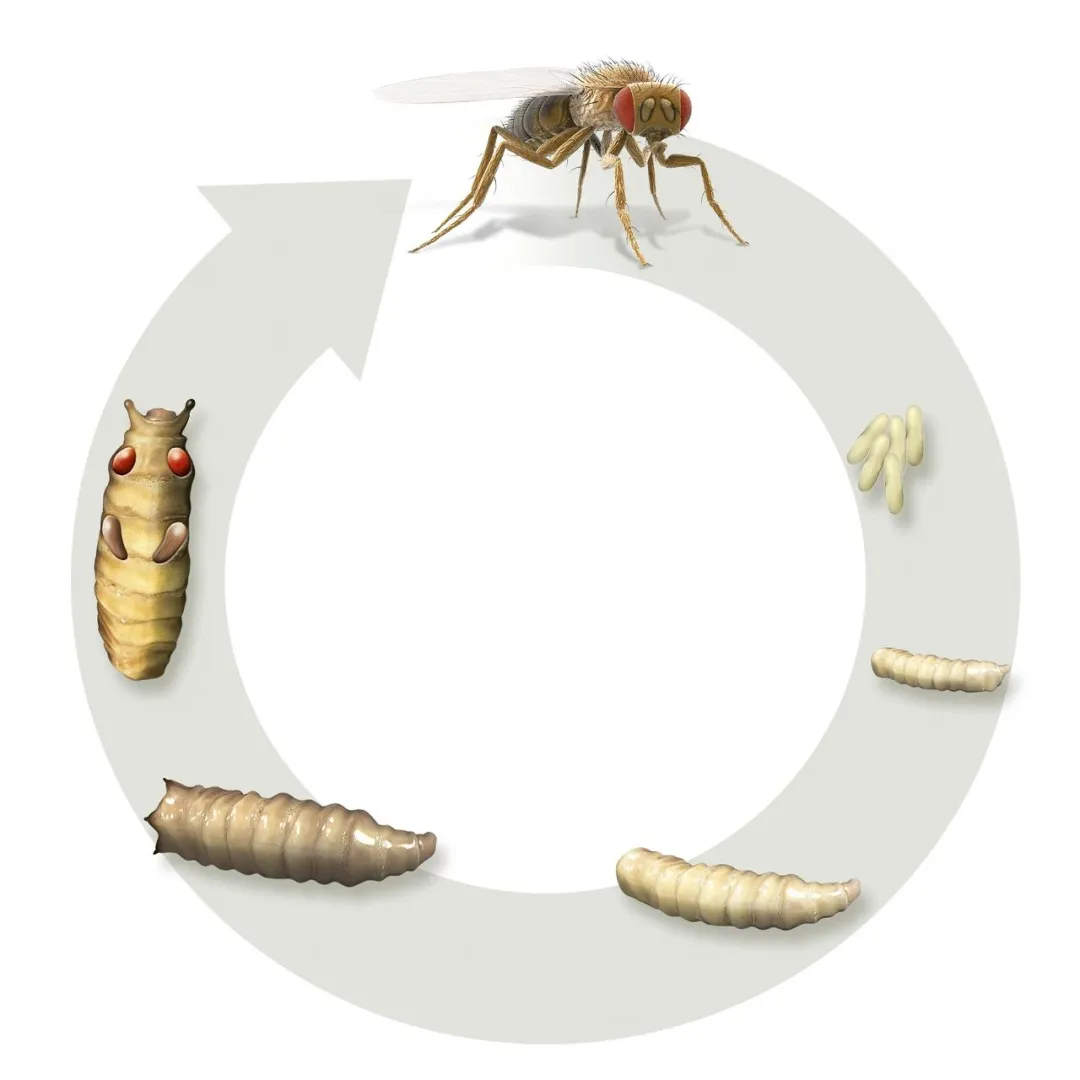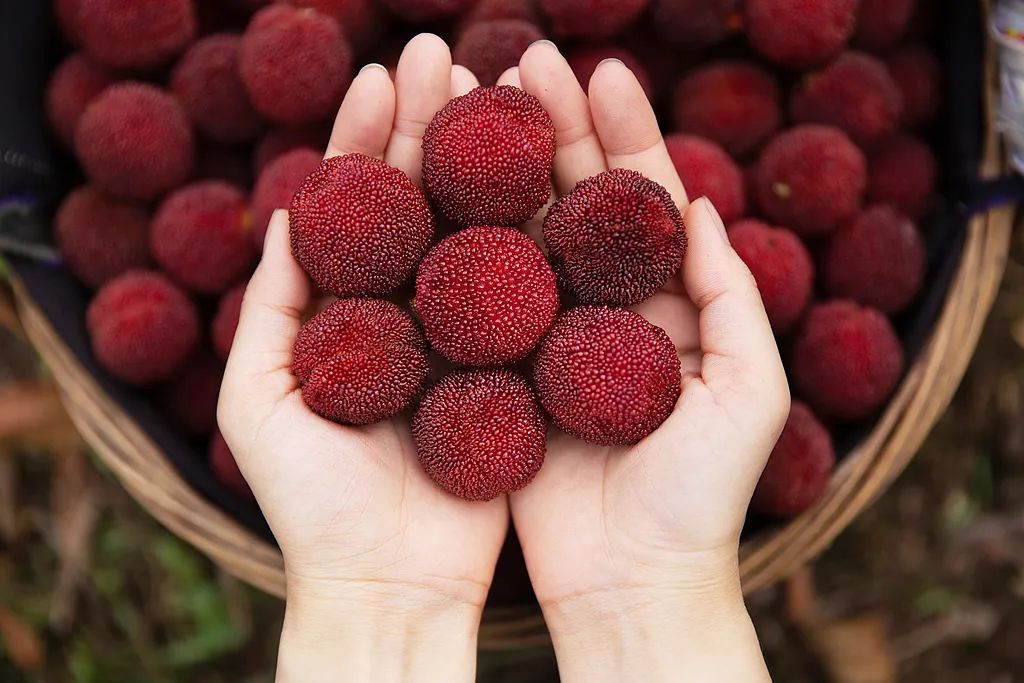每年五六月份,正是吃杨梅的好时节。一颗颗红得发紫的杨梅酸甜可口,汁水充沛,很难让人不爱。
不过,杨梅的果肉里经常会出现胖乎乎的小虫子,让很多人难以下口。如何吃到“纯享版”杨梅?
Late spring (May-June) heralds bayberry season — but while these juicy fruits delight many, their tiny larvae often deter eaters. Rest assured, with proper cleaning, bayberries are perfectly safe to enjoy.
杨梅是源于我国的特产水果,世界上90%以上的杨梅都产自我国。杨梅喜温暖湿润气候,在我国亚热带地区广泛种植,云南、广西、贵州、浙江、福建等地均有分布。
China produces over 90 percent of the world's bayberry supply. Thriving in warm, humid subtropical climates, they are widely cultivated in Yunnan, Guangxi, Guizhou, Zhejiang, and Fujian.

图源:VCG
根据《中国居民膳食指南》中的建议,水果每天摄入量最好控制在200—350g,6颗稍微大点的杨梅约为100g,如果全天水果都吃杨梅,最好不要超过20颗。
Daily fruit intake should be 200-350g. Six larger bayberries weigh approximately 100g, so it's best to consume no more than 20 berries per day if eating them exclusively.
杨梅里的虫子到底是什么?
不过,杨梅果肉里经常出现胖乎乎的小虫子,让很多人难以下嘴。
这种小虫子是果蝇的幼虫,无毒无害。果蝇幼虫体型很小,一般情况下很难被发现,被吃下肚很正常。
The plump larvae commonly found in bayberries are fruit fly maggots – harmless and non-toxic. These tiny larvae are usually invisible and are often consumed inadvertently.

有人可能会担心:这虫子吃进肚子里会不会在体内继续活着到处爬呀?或者在人体寄生?
这点完全不用担心。果蝇是一种不耐热的生物,生存的上限温度为35—36℃,高于36℃时间稍长即会死亡。人体的正常温度高于36℃,胃里还有胃酸,果蝇就算不被热死,也无法在胃酸中存活。
Concerns about the larvae surviving or parasitizing humans are unfounded. Fruit flies cannot withstand temperatures above 35-36 C and die quickly above this threshold. The human body maintains a core temperature above 36 C, and stomach acid provides an additional lethal barrier.
如何清洗杨梅才能放心吃?
如果你能接受杨梅内有虫子,但不太想看见活虫子,那可以把杨梅冷藏或者冷冻后再吃。果蝇生存的下限温度为8—10℃,低于5℃则处于休克状态,12—24小时后便会被冻死。
If you can accept that bayberries might contain insects but don't want to see live larvae, you can refrigerate or freeze them before eating. Fruit flies cannot survive below 8–10°C (46–50°F), and temperatures below 5°C (41°F) will cause them to become immobile. After 12–24 hours in these conditions, they will die.
如果你觉得恶心,不想吃到虫子,这里有一份“精洗指南”。
If you feel grossed out and don't want to eat insects, here's a "Thorough Cleaning Guide".
▌第一步
使用清水先冲洗杨梅2遍,然后盆中接清水,加入一勺食盐、一勺食用碱,搅拌均匀后,将杨梅浸泡5分钟。浸泡时,用手轻轻地搅动,利用水流来清洗杨梅。
Rinse bayberries twice under running water. Fill a bowl with clean water, add 1 spoonful of salt and 1 spoonful of edible alkali (or baking soda), and stir to dissolve. Soak berries for 5 minutes, gently agitating them to dislodge impurities.
▌第二步
把杨梅捞出来冲洗2遍,再放入清水中,加入一勺面粉搅拌均匀,浸泡5分钟,用手不停搅拌。
Remove berries and rinse twice. Refill the bowl with clean water, add 1 spoonful of flour, and stir. Soak for another 5 minutes, stirring continuously.
▌第三步
把杨梅捞出,用清水冲洗干净,这样就可以吃到“超级至尊纯享版”杨梅了。
Rinse berries thoroughly under running water and enjoy!

图源:VCG
低温冷藏保存能更好地维持杨梅果肉的品质,建议贮藏温度是0—4℃。这个温度范围内能更好地降低杨梅水分、香味和营养成分的流失,也能抑制病原菌的生长,有效防止果实腐烂;还能降低杨梅的呼吸作用,保障杨梅的新鲜。
For optimal quality, store cleaned bayberries at 0–4 C. This temperature range delivers triple benefits: slowing moisture, flavor, and nutrient loss; suppressing pathogens to prevent decay; and reducing respiration rates to extend freshness.
文章来源:中国日报双语新闻
(本网站只做公益分享,如有侵权,请联系删除。)